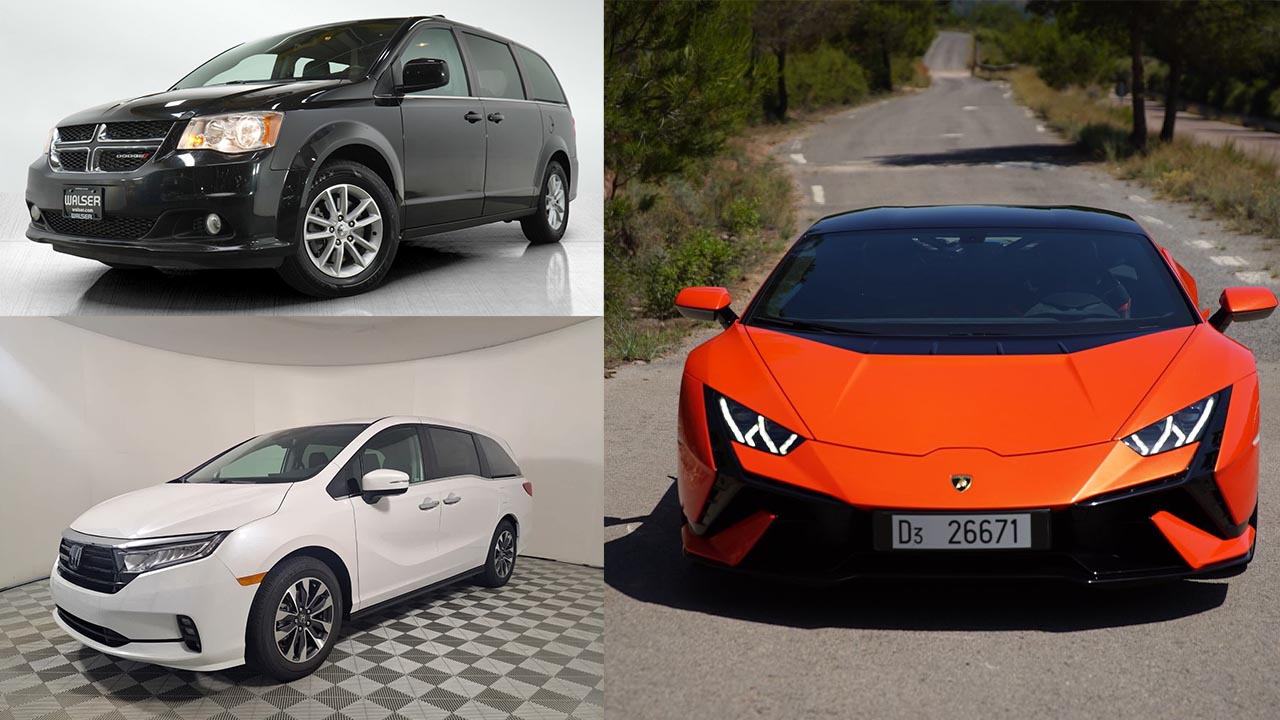In a world where horsepower seems to be growing on trees, achieving straight-line speed has become almost effortless. But carving corners with speed and precision? That’s the true measure of a performance car, and it’s where the real standouts emerge from the crowd.
To highlight the best of the best, we’ve compiled the 10 top-handling vehicles from the 185 cars MotorTrend tested throughout 2022. This list is built on two core metrics: lateral acceleration—which reflects a car’s maximum grip while cornering on a flat surface—and figure-eight lap times.
The figure eight, often referred to as our “racetrack in a bottle,” combines sweeping left- and right-hand turns with aggressive acceleration and braking.
Best Handling Cars
It’s a complex test that reveals a car’s true dynamic qualities, including how it steers, manages body movement, and maintains overall balance.
But handling isn’t just about numbers on a page. It’s also about the way a car feels—how precise the steering is, how well the chassis is tuned, and how much confidence it inspires in the driver.
That’s why we’ve also included insight from road test editor Chris Walton, the driver responsible for recording all of this performance data.
5. 2022 Porsche 911 Turbo S Cabriolet
With a skidpad grip of 1.11 g and a figure-eight time of 22.3 seconds at 0.95 g, the 2022 Porsche 911 Turbo S Cabriolet delivers performance that belies its convertible nature. Pop quiz: Based on the earlier mention of the 911 Turbo S Lightweight, was this Turbo S Cabriolet fitted with Goodyear Eagle F1 SuperSport or Pirelli P Zero tires?
If you said “Pirellis,” you’re right on the money. Even though it carries an extra 265 pounds compared to the Lightweight, the Cabriolet makes up for it with better composure and grip from its P Zero rubber.
According to Walton, the driving feel is spot-on: “The steering feels natural and is very tactile. That allows you to know how much grip is available at the front end as the wheel loads and unloads accordingly,” he said.
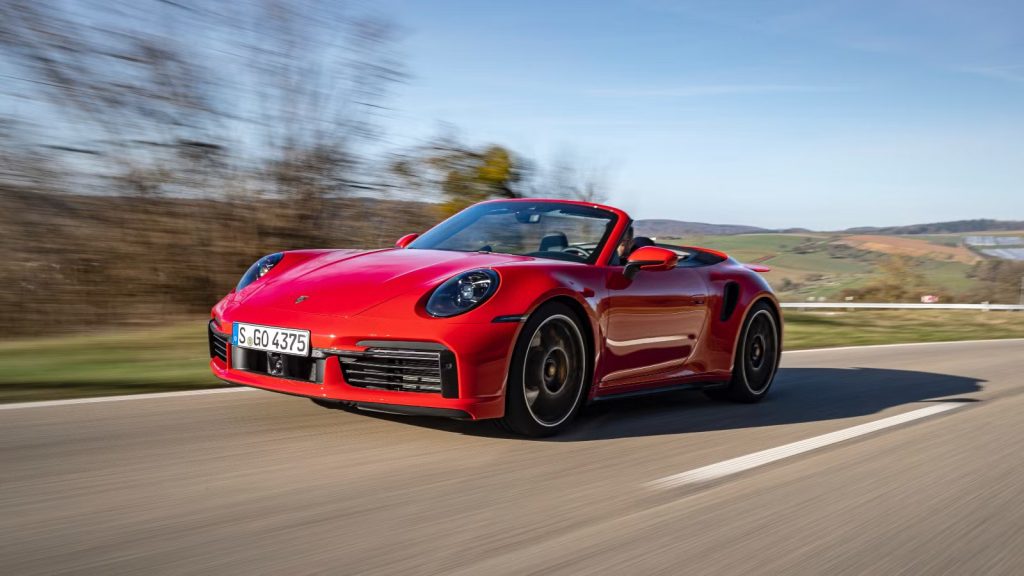
“This is the kind of car that’s so communicative and consistent that there’s no doubt when you get the golden lap and that you can repeat it. This is a unique quality that I only experience a couple times a year.”
Despite being heavier and more luxurious, the Turbo S Cabriolet proves that top-down driving doesn’t mean compromising on serious performance. Check out our comparison of the 911 Turbo S Cabriolet versus the Mercedes-AMG SL63 for a closer look.
4. 2023 Lamborghini Huracán Tecnica
The 2023 Lamborghini Huracán Tecnica is a rear-wheel-drive supercar that combines the raw performance of the Huracán STO with the everyday usability of the Huracán EVO.
It features a naturally aspirated 5.2-liter V10 engine producing approximately 631 horsepower and 417 lb-ft of torque. Paired with a 7-speed dual-clutch transmission, it accelerates from 0 to 60 mph in an estimated 3.2 seconds, with a top speed around 202 mph.
The Tecnica’s design includes a fixed rear wing that increases downforce by 35% compared to the Huracán EVO, and a redesigned front splitter that reduces drag by 20%. It also features a rear-axle steering system and torque vectoring for enhanced handling.
Inside, the Tecnica offers a driver-focused cockpit with an 8.4-inch touchscreen, a 12.3-inch digital instrument cluster, and standard features like Apple CarPlay, Android Auto, and Amazon Alexa integration. The cabin can be customized with various materials and finishes, including optional carbon fiber and titanium elements.

For those seeking a supercar that delivers both exhilarating performance and everyday usability, the Lamborghini Huracán Tecnica stands out as a compelling choice.
In terms of pricing, the 2023 Lamborghini Huracán Tecnica has a starting Manufacturer’s Suggested Retail Price (MSRP) of $275,000. However, due to its exclusivity and high demand, actual market prices for new or lightly used models may vary.
For instance, a used 2023 model with 420 miles was listed at $329,900. Another listing from a reputable dealer in Las Vegas offered a 2023 Huracán Tecnica with approximately 1,459 miles for $315,495.
It’s important to note that these prices reflect the vehicle’s condition, mileage, and any additional features or customizations.
3. 2022 Porsche 911 GT3 Touring
With a skidpad result of 1.19 g and a figure-eight lap time of 22.5 seconds at 0.92 g, the 2022 Porsche 911 GT3 Touring stands out as a stealthy performance weapon.
This Touring model is essentially a sleeper version of the hardcore 911 GT3, forgoing dramatic aerodynamic elements in favor of a more understated appearance, while still retaining the same intense focus and capability beneath the surface.
In fact, while executing a seriously fast figure-eight lap, the 502-hp GT3 Touring with a manual transmission matched the highest skidpad figure ever recorded by a production car—a record now shared by three cars: the 2022 911 GT3, the 2019 911 GT3 RS, and this Touring model.
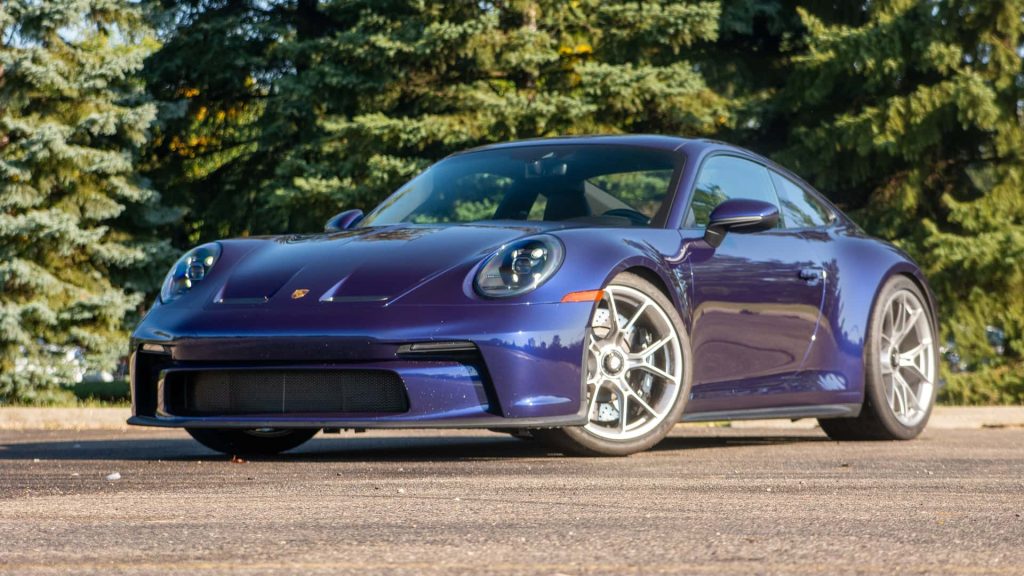
Walton was thoroughly impressed, declaring the GT3 Touring his “favorite Porsche 911 yet,” a bold statement considering the long line of Porsche models he’s driven. “My goodness, things happen quickly in this car,” he said.
“There’s the smallest amount of understeer on the skidpad, but it really comes off as being perfectly balanced. You can do that old 911 trick at the exit where you briefly lift the throttle to kill the understeer, then mash it for a little tail action—so, so fun.”
It’s a car that blends track-ready performance with everyday subtlety, proving you don’t need wings and vents to dominate the corners. You can read more in our first test of the 2022 Porsche 911 GT3 Touring.
2. 2023 Chevrolet Corvette Z06 with Z07 Package
Posting 1.16 g on the skidpad and a blazing 21.9-second figure-eight lap at 0.99 g, the 2023 Chevrolet Corvette Z06 equipped with the Z07 package delivers performance numbers that place it in elite company.
In terms of cornering prowess and lap times, it runs with titans like the 2021 Mercedes-AMG GT Black Series, the 2019 McLaren Senna, and the 2018 Porsche 911 GT2 RS. A major part of that capability comes from the Z07 package’s Michelin Pilot Sport Cup 2 R ZP tires, which dramatically boost grip.
However, Walton singled out the optional $11,995 carbon-fiber wheels as the key to the Z06’s remarkable dynamics, saying they fundamentally changed how the car feels and behaves. Still, this is not a car for novices.

“It takes some time to build driver confidence and to find the limits of grip, but once you’re there, it’s easy to maintain,” Walton explained.
“I found myself nicking the second cone because turn-in is so quick. This car is very talkative at the limit, and you should heed its warnings. You’ll need quick hands to catch it if it starts to spin.” In other words, the Z06 is brutally fast, but you have to earn its trust before it rewards you with its full potential.
1. 2022 McLaren 765LT Spider
Delivering a skidpad result of 1.17 g and a figure-eight time of 21.8 seconds at 1.01 g, the 2022 McLaren 765LT Spider stakes its claim as the new MotorTrend figure-eight champion.
This result is what happens when you take a 755-hp twin-turbo V-8, wrap it in a 3,223-pound carbon-fiber body, and outfit it with Pirelli P Zero Trofeo R MC1 tires. As with all of McLaren’s LT models, the 765LT Spider is designed to tear through racetracks with surgical precision, and it makes no apologies for its raw character.
From the moment you lower yourself into the optional carbon-fiber-shell seat—thinly padded and uncompromising—you get a preview of the intense, borderline brutal experience that lies ahead, even before the engine roars to life.
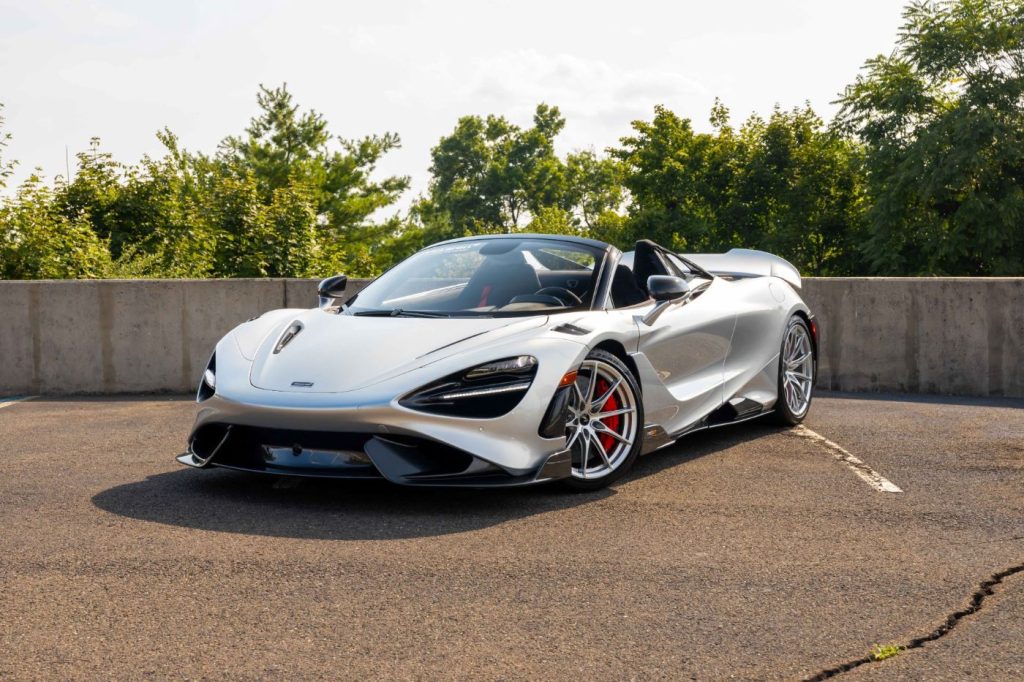
The short brake pedal travel, minimal noise insulation, and lightning-fast steering inputs all reinforce the fact that this nearly $400,000 machine is, at its core, a street-legal race car.
Walton described the 765LT as a “tricky car to master,” ultimately achieving his best lap during a single standout effort in a session of roughly ten attempts. “There’s a very vague sense of understeer on the skidpad with the threat of it turning into oversteer at any moment,” he observed.
“The steering is remarkably talkative and tells you exactly how much grip you have.” The 765LT Spider demands precision, patience, and skill—but for those who can handle its intensity, it delivers world-class performance at the absolute edge.
Also Read: 10 Best Cars That Balance Horsepower With Long-Term Value
Worst Handling Cars
We all enjoy discussing cars that generate more than “1.0g on the skidpad” or come dangerously close to breaking records on our “Figure Eight course,” but it’s important to remember that there’s another side to that spectrum.
These are the vehicles riding on what feel like hockey puck-sized tires, the SUVs that are a real challenge to manage, and the bulky, understeer-heavy minivans.
To be fair, none of the vehicles on this list pretend to be something they’re not, so it’s worth taking these performance numbers with more than just a grain of salt. With that in mind, here are the 10 worst performers for your consideration.
Honda Odyssey EX-L
The 2011 Honda Odyssey EX-L posted a figure-eight time of “29.4 sec @ 0.56 g (avg)” and managed “0.73 g (avg)” on the skidpad. Unlike the Touring variant, which features a six-speed transmission and 18-inch wheels, the EX-L comes with a five-speed automatic and 17-inch wheels.
This difference in drivetrain and wheel size is likely the primary factor behind the four-tenths of a second gap in handling performance between the two trims of Honda’s minivan.
The Honda Odyssey EX-L is a standout trim in Honda’s popular minivan lineup, offering a strong mix of comfort, practicality, and upscale features that make it a top pick for families who want more than just the basics.
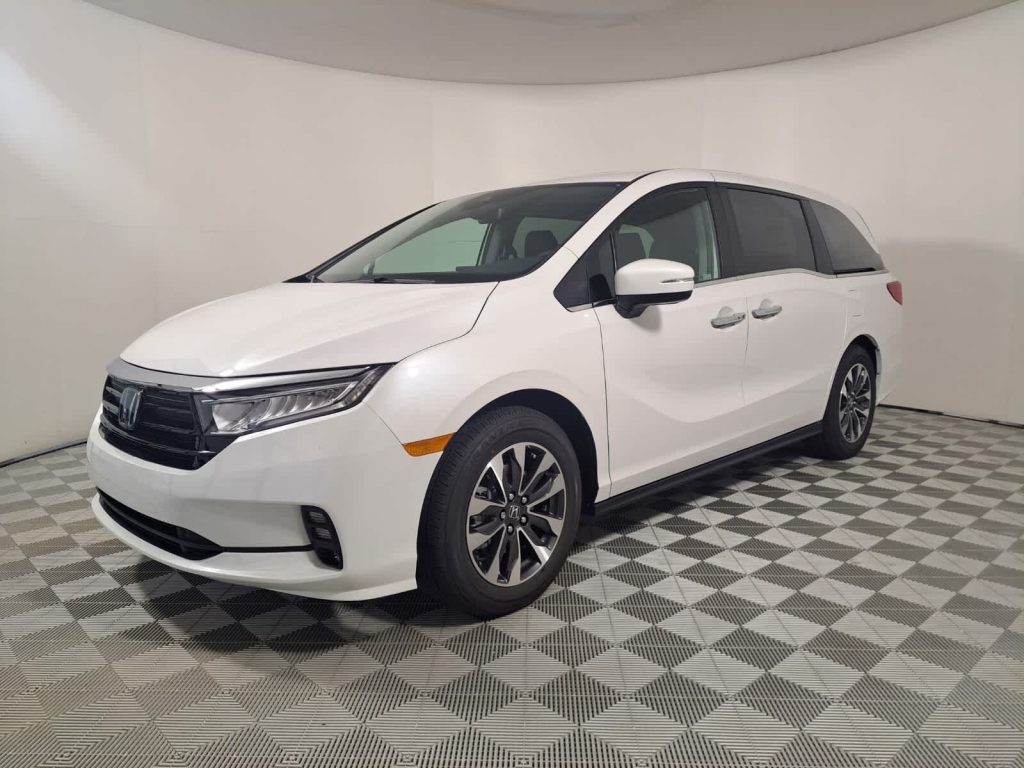
Powered typically by a V6 engine producing between 248 and 280 horsepower depending on the model year, the EX-L delivers solid performance for a minivan.
Early models like the 2011 version are equipped with a five-speed automatic transmission, while newer ones feature six-, nine-, or even ten-speed automatics for smoother acceleration and better fuel efficiency. Though not designed for sporty driving, the Odyssey handles respectably for its size, offering a comfortable and composed ride.
Mercedes-Benz GL 450
The 2010 Mercedes-Benz GL 450 recorded a figure-eight result of “29.6 sec @ 0.54 g (avg)” and pulled “0.70 g (avg)” on the skidpad. Weighing in at 5300 pounds, the GL 450 is arguably the least surprising name to appear here.
As Mercedes-Benz’s largest SUV—and a former Sport/Utility of the Year—it has no trouble keeping pace with competitors like the Infiniti QX56 in a straight line. But when faced with a tight corner, brace yourself, because things can get interesting fast.
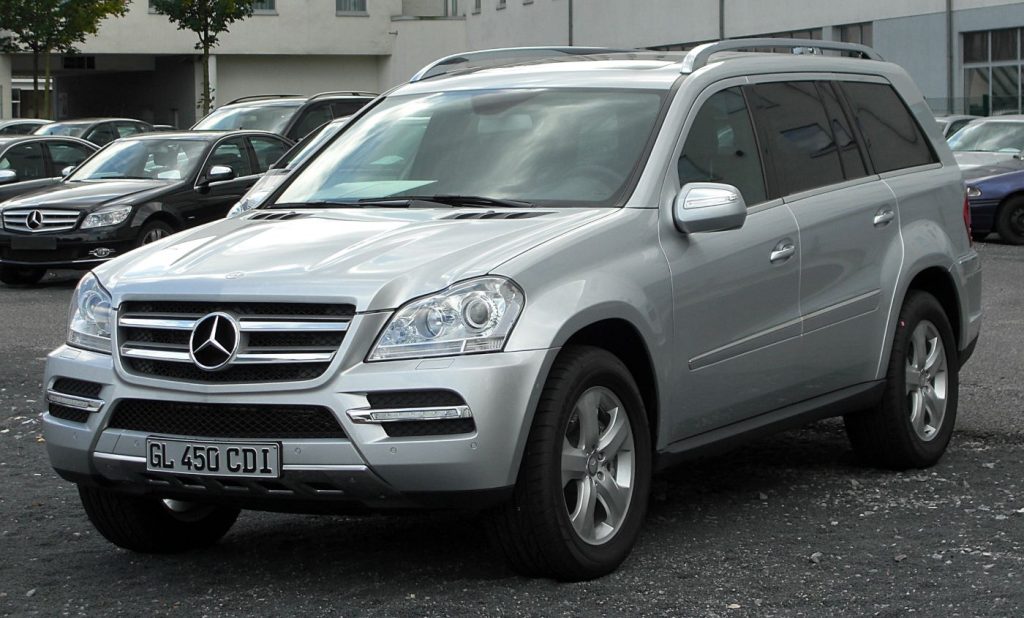
Under the hood, the 2010 GL 450, for example, is powered by a 4.6-liter V8 engine producing 335 horsepower and 339 lb-ft of torque, paired with a 7-speed automatic transmission and 4MATIC all-wheel drive as standard.
It’s a heavy beast—tipping the scales at over 5,300 pounds—but still manages solid acceleration and respectable highway manners. That said, it’s not exactly nimble. On handling tests like the figure eight and skidpad, its performance reflects its bulk, with considerable body roll and a clear bias toward comfort over agility.
Toyota Yaris
The 2010 Toyota Yaris clocked in at “29.6 sec @ 0.53 g (avg)” on the figure-eight course and achieved “0.76 g (avg)” on the skidpad. Given that the Yaris was the slowest car tested in 2010, it’s hardly shocking to see it rank among the poorest performers in terms of handling.
While its skidpad numbers are on par with those of the Jeep Grand Cherokee and Toyota Avalon, the Yaris simply lacks the power to post a figure-eight result anywhere near their level.
The Toyota Yaris is a subcompact car that has long been known for its affordability, reliability, and fuel efficiency.
It was designed for drivers who want basic transportation with low running costs, and while it’s never been known for excitement or performance, it consistently delivers in terms of practicality and value. The Yaris has gone through several evolutions since its launch, with both hatchback and sedan body styles offered over the years.
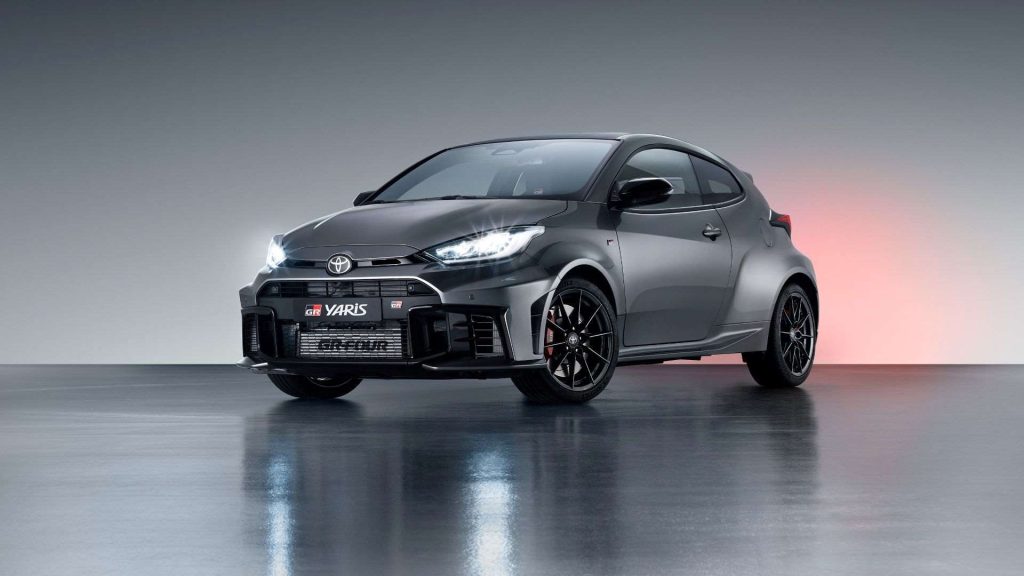
The 2010 Toyota Yaris, for example, came with a 1.5-liter inline-4 engine making around 106 horsepower and was available with either a 5-speed manual or 4-speed automatic transmission.
It’s light and easy to maneuver, which makes it ideal for city driving and tight parking spots. However, its performance is modest at best—acceleration is slow, and it’s not built for handling curves at speed.
Honda Element EX
The 2010 Honda Element EX turned in a figure-eight time of “29.8 sec @ 0.52 g (avg)” and managed “0.73 g (avg)” on the skidpad.
Honda’s soon-to-be-discontinued, boxy crossover makes another appearance from our list of 2010’s 10 slowest vehicles, reinforcing its reputation for driving dynamics that feel uncharacteristically un-Honda. Moving on.
The Element EX is powered by a 2.4-liter inline-4 engine (shared with the CR-V of the same era), producing around 166 horsepower and 160 lb-ft of torque in later model years. It’s paired with either a 5-speed manual or 5-speed automatic transmission.

Front-wheel drive is standard, but Real Time 4WD (Honda’s version of all-wheel drive) is available on EX models, making it a capable performer in bad weather or on light off-road trails.
While it isn’t fast or particularly agile, the Element’s tall driving position, tight turning radius, and solid visibility make it a great urban vehicle. On the flip side, its boxy shape and relatively high center of gravity mean it leans in corners, and the ride can feel stiff over uneven pavement.
Dodge Grand Caravan SXT
The 2010 Dodge Grand Caravan SXT recorded a figure-eight result of “30.5 sec @ 0.52 g (avg)” and a skidpad performance of “0.67 g (avg).” This minivan stands alone in 2010 as the only vehicle to enter the 30-second club, earning the unfortunate distinction of being the worst-handling vehicle we tested over the past year by all three performance metrics.
In its defense, the refreshed 2011 Grand Caravan is expected to perform more in line with the 2011 Town & Country, which came in at No. 8 on this list.
The Dodge Grand Caravan SXT, especially in its later production years (2008–2020), served as a value-driven minivan with a strong focus on utility and family hauling. While its design and tech became dated by the 2010s, the SXT trim was often the most feature-packed and widely available version.
Let’s break down its powertrain and performance in detail, focusing mainly on the 2010 model, since that’s the one you referenced earlier—though the overview will include broader context across other years for clarity
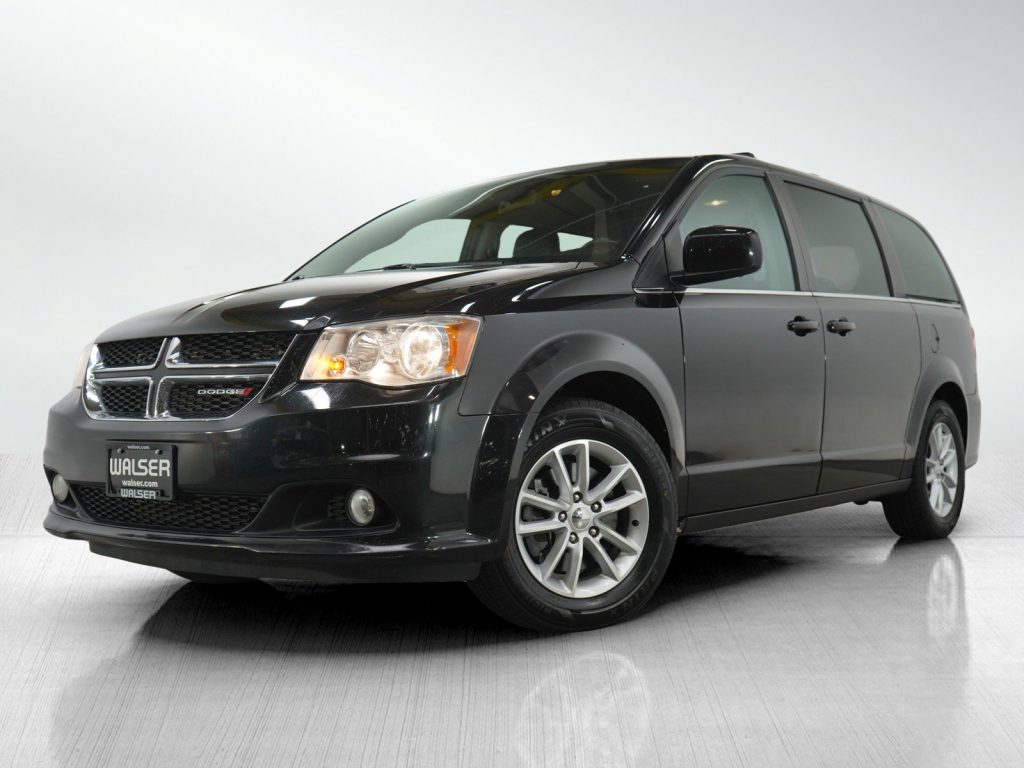
The 2010 Dodge Grand Caravan SXT came standard with a 4.0-liter SOHC V6 engine, making 251 horsepower and 259 lb-ft of torque. This engine was paired with a 6-speed automatic transmission, offering smoother shifts and better fuel economy than the 4-speed automatic used in lower trims like the SE.
Earlier SXT models (2008–2009) used a 3.8-liter V6, while by 2011 Dodge standardized its Pentastar 3.6-liter V6 across all trims, boosting output to 283 horsepower and 260 lb-ft of torque—a significant improvement in refinement and performance.
All Grand Caravan SXT models are front-wheel drive (FWD). Dodge never offered an all-wheel-drive version for this generation, which was one of the downsides when compared to competitors like the Toyota Sienna, which did offer AWD.

